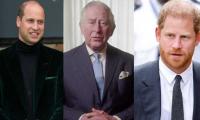Fifteen kids from a dozen countries, including Swedish activist Greta Thunberg, recently brought a formal complaint to the United Nations. They’re arguing that climate change violates children’s rights as guaranteed by the Convention on the Rights of the Child, a global agreement.
By petitioning the UN on behalf of the world’s children, their action made history. But it’s not the first time that kids have turned to this international accord in pursuit of social change.
As I explain in my book, ‘The Kids Are in Charge’, the Convention on the Rights of the Child isn’t just a legal document. It also sends kids an important message: that they matter, that their voices are important and that they deserve to be heard. When countries join this agreement, they pledge to work toward aligning their own laws with its principles.
The convention formally recognizes children as people with universal human rights and specific rights because of their age. It reflects a shift away from seeing children entirely as the possessions of their parents to treating them as individuals with equal rights and their own interests.
Many countries have taken action to promote children’s rights and well-being based in part on its mandate. For example, South Africa recently became the 57th country to prohibit corporal punishment in all settings, including schools and homes.
Corporal punishment remains legal in public schools in 19 American states and no state has outlawed the practice for parents.
In Ireland, a 2012 constitutional amendment gave kids the right to be heard in custody hearings and other court proceedings. And in Nigeria, the federal government created a children’s parliament and incorporated the perspectives of minors when drafting that country’s Children’s Rights Act.
President Bill Clinton signed this convention in 1995. But the US Congress has never ratified this accord.
In fact, the US is the only country that has refused to embrace the world’s most-ratified human rights agreement. It has 196 signatories including all of the UN member states except the US plus some UN observers and non-members, such as Palestine, the Holy See and the
South Pacific territories of Cook Islands and Niue.
Kids and their communities don’t necessarily have to know about the legal details of the treaty to embrace the idea of children’s rights and make it their own.
Researchers working in different contexts around the world have found that learning about the convention and their rights increases children’s feelings of self-esteem and self-worth, promotes social responsibility and improves their relationships with their schools, teachers and each other.
According to a report from the Centre for Children’s Rights at Queen’s University Belfast and Save the Children International, it can also motivate kids to stand up for themselves and to defend their peers.
Excerpted from: ‘A UN Treaty Guarantees Youth Rights Everywhere on Earth – Except the United States’. Commondreams.org







